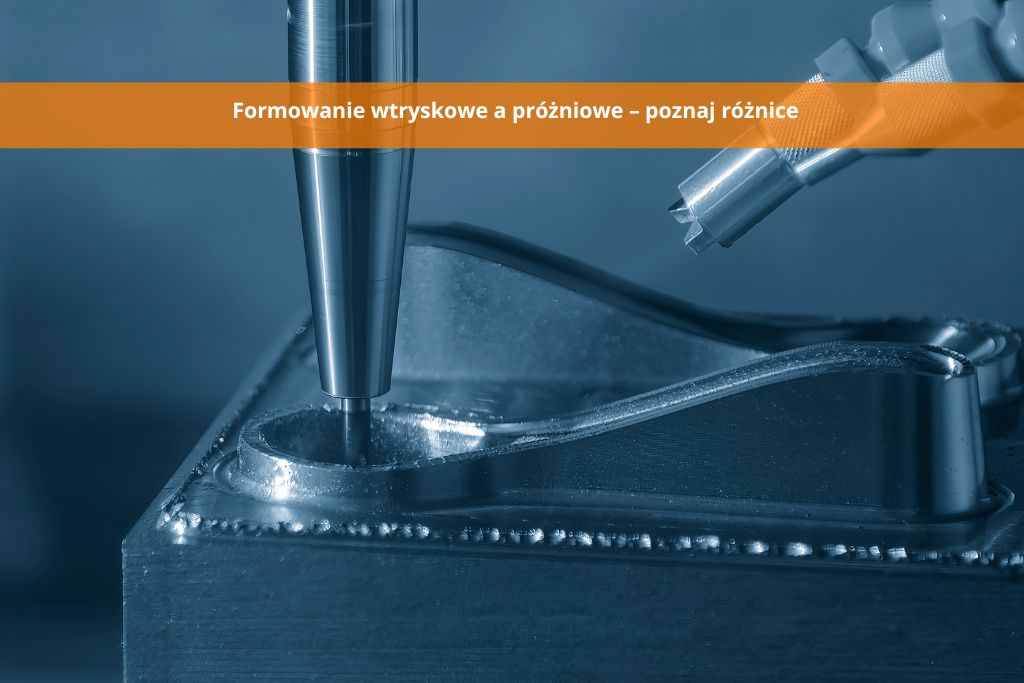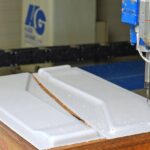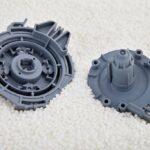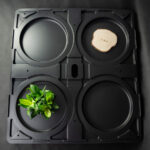Modern manufacturing requires technologies that combine precision, efficiency and flexibility. Among plastic processing methods, injection molding and vacuum molding are among the most widely used processes. Both techniques make it possible to create high-quality components, but they differ in their operating principle, range of applications and cost of implementation. Which one will work better for your project?
Injection molding vs. vacuum molding - manufacturing technologies
The choice of the right plastic processing technology depends on many factors, such as the shape, size, level of complexity of the workpiece and the expected scale of production. And what does it look like from behind the scenes? What products are created by these methods and what exactly do both processes consist of?
Injection molding - what does it consist of?
Imagine the housing of a TV remote control, LEGO® bricks or the plastic parts of a car's dashboard. All of these items are created through injection molding - one of the most widely used technologies in plastics processing. It's a method that allows for the precise and reproducible creation of large quantities of identical parts.
The process begins by heating plastic granules (such as ABS, polypropylene or polycarbonate) to a high temperature until they turn into a liquid mass. Then, under tremendous pressure, the molten material is forced into a closed, precision-made steel mold, the inside of which conforms to the shape of the finished product. Once the mold is filled, the plastic begins to cool, solidify and take its final shape. When the material has completely hardened, the mold is opened and the finished part is pushed outward.
Injection molding - what does the production process look like?
Now think of a plastic transport tray, a tool tray or a lightweight car headlight cover. Such products, in turn, are created by vacuum forming, also known as thermoforming.
Unlike injection molding, this process does not use liquid plastic, but a sheet of plastic that is heated until it becomes soft and flexible - but not liquid. The sheet is then placed over the mold, and the air between the sheet and the mold is extracted, creating a vacuum. Atmospheric pressure then presses the soft material against the mold, giving it its shape. Once the plastic has cooled, the finished product is formed. A characteristic of this method is that the plastic is molded on one side only, meaning that products have one side smooth and the other with the outline of a mold.
Applications and types of products
Injection molding is ideal for producing small, more complex parts with complex geometries. The method is commonly used to manufacture electronic components, automotive parts, toys, packaging with complex shapes and household items. With the ability to precisely control process parameters, injection molding allows for high surface quality, accurate dimensions and the ability to combine different materials in a single production cycle.
Vacuum forming (thermoforming), on the other hand, is used to produce large, often simpler parts with thin or thick walls. Examples of applications include, but are not limited to:
- Automotive - engine covers, wheel arches, fenders, hoods, door panels.
- Public transport - luggage shelves, wall panels, seat components, armrests, tables.
- Medical equipment - diagnostic equipment housings, dental unity components, hospital bed panels.
- Specialized vehicles - heat shields, agricultural machinery components, quads, off-road vehicles.
- Industry and logistics - transport containers, plastic pallets, tanks for bulk substances, plastic manholes.
- Electromobility - Battery and battery covers for electric vehicles.
- Construction - roof window domes, technical covers.
- Home and garden - lawnmower components, baby carriage nacelles, wading pools.
This vacuum thermoforming technology allows the production of both thin-walled transport packaging and components with greater wall thicknesses, which must have high mechanical strength.
Production economics and practical considerations
Initial costs are one of the most important differences between the two technologies. Injection molding requires a significant investment in molds, which are made of high-quality steel and must be precisely machined. This high initial cost makes the method cost-effective mainly for mass production, where the cost of the mold is spread over thousands or millions of parts produced.
Vacuum molding is characterized by much lower start-up costs. The molds can be made of aluminum, wood and even 3D printed materials, making them cheaper and much faster to produce. This flexibility makes the technology ideal for prototyping, short production runs and companies with limited investment budgets.

Follow us on social media
You may also be interested in:
- Understanding CNC machines: What should you know about their operation and benefits?Is it possible to produce quickly, precisely and without any worries about repeatability? CNC machines make what used to require the hand of a master and many hours of adjusting, happen today in an automated, controlled and predictable way. After all, CNC machines work on projects where accuracy to tenths of a millimeter counts, as well as full control over every stage of machining. But how does this technology actually work, and why should it be used in the production of plastic components?
- The use of plastics in industryDo you know what the bottle of the iconic Family Shampoo has in common with the engine cover on a Tesla Model 3? Well, more than you might expect. Plastics today play a key role in modern industrial processes - from everyday objects to high-tech components used in automotive, aerospace and construction. Their versatility and innovation are second to none. ...
- Plastic Moldings and Thermoformed Extrusions: Advantages and Applicability in Various IndustriesIt's hard to find an industry today that doesn't need a precision-engineered, lightweight yet durable plastic component. From delicate blisters in pharmaceuticals, to transport trays on automotive lines, to ESD anti-static extrusions to protect electronics during manufacturing and logistics, thermoformed extrusions are popping up everywhere.
- Vice President Dobrochna Kochanska an official member of the Business Center ClubVice President Dobrochna Kochanska an official member of the Business Center Club

















